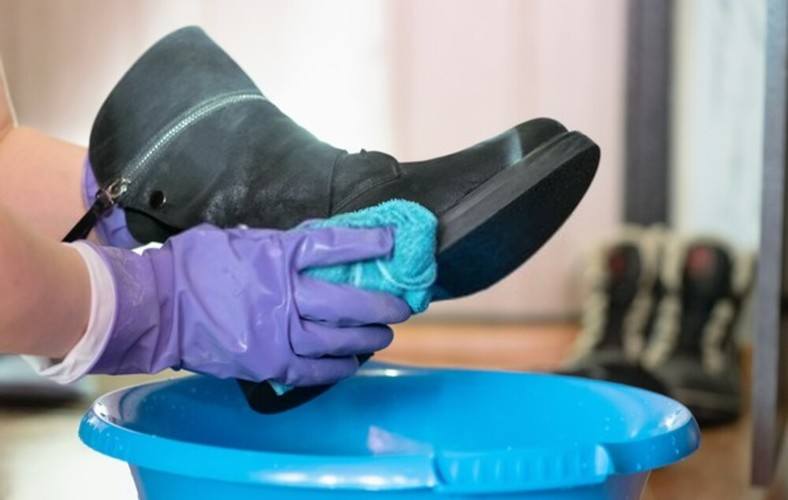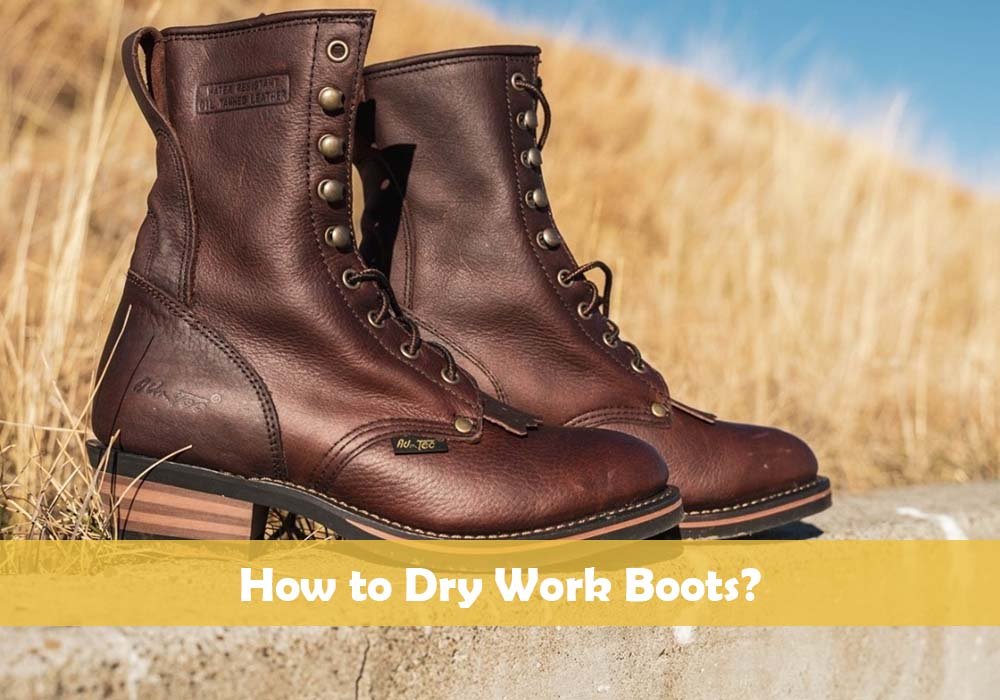Why Regular Cleaning is Essential for Work Boot Maintenance
Regular cleaning is a vital part of work boot maintenance, and it’s essential to understand the importance of incorporating this habit into your daily routine. Failing to clean your work boots regularly can lead to a buildup of dirt, debris, and other substances that can cause damage to the material, compromise the boot’s waterproofing, and even affect the overall performance of the boot. By learning how to wash work boots properly, you can prevent these issues and extend the lifespan of your boots. In fact, a clean pair of work boots can make a significant difference in their durability and overall condition. A clean boot not only looks better but also provides a safer and healthier working environment. By removing dirt, grime, and other substances, you can reduce the risk of slipping, tripping, and falling, which are common hazards in many workplaces. Moreover, clean work boots can help prevent the spread of diseases and infections, especially in industries where workers are exposed to harsh chemicals, bacteria, and other contaminants. By understanding the importance of regular cleaning, you can take the first step towards maintaining your work boots and ensuring they continue to serve you well for a long time.
Preparing Your Work Boots for Cleaning
Before you start washing your work boots, it’s essential to prepare them properly to ensure a thorough and effective cleaning process. The first step is to remove any detachable parts, such as laces, insoles, and tongue pads. This will give you access to the entire boot and prevent any damage to these parts during the cleaning process. Next, inspect the boots for any loose debris, such as dirt, dust, or small rocks, and gently remove them with a soft-bristled brush or a clean cloth. This will prevent scratching the boot’s surface during the cleaning process. Additionally, if your work boots have any metal hardware, such as buckles or eyelets, apply a small amount of lubricant to prevent rust or corrosion. By taking the time to prepare your work boots properly, you’ll be able to clean them more effectively and ensure they remain in good condition. Remember, learning how to wash work boots correctly is crucial to maintaining their quality and extending their lifespan.
Choosing the Right Cleaning Products for Your Work Boots
When it comes to cleaning your work boots, using the right products is crucial to avoid damaging the materials and ensuring a thorough clean. The type of cleaning product you choose will depend on the type of material your boots are made of, as well as the level of dirt and grime they’ve accumulated. For most work boots, a mild soap or a specialized boot cleaner is recommended. These products are gentle on the materials yet effective at removing dirt and grime. Avoid using harsh chemicals or abrasive cleaners, as they can damage the leather, rubber, or other materials used in your boots. Additionally, consider using a conditioner or waterproofing spray to protect your boots from the elements and extend their lifespan. When learning how to wash work boots, it’s essential to choose the right cleaning products to ensure a safe and effective cleaning process. By selecting the appropriate products, you’ll be able to clean your work boots with confidence and keep them looking their best.
Washing Your Work Boots: A Gentle Approach
Now that you’ve prepared your work boots for cleaning and chosen the right cleaning products, it’s time to start washing. When learning how to wash work boots, it’s essential to take a gentle approach to avoid damaging the materials. Start by mixing a small amount of mild soap or specialized boot cleaner with warm water in a bucket. Dip a soft-bristled brush or a clean cloth into the solution and gently scrub away any dirt, grime, or stains on the boots. Be sure to scrub in a circular motion to avoid scratching the surface. For tough stains, you can let the solution sit for a few minutes before scrubbing. Once you’ve scrubbed the entire boot, rinse it thoroughly with clean water to remove any soap residue. When washing your work boots, remember to avoid using harsh chemicals, excessive water, or high heat, as these can damage the materials and compromise the boot’s integrity. By following these gentle washing techniques, you’ll be able to effectively clean your work boots without causing damage.
Removing Tough Stains and Odors from Work Boots
Despite regular cleaning, tough stains and odors can still develop on work boots. When learning how to wash work boots, it’s essential to know how to remove these stubborn stains and odors. For tough stains, try using a solution of baking soda and water to create a paste. Apply the paste to the stain and let it sit for about an hour before rinsing with clean water. For oil-based stains, try using a small amount of dish soap and warm water to gently scrub the area. For odors, sprinkle a small amount of baking soda or activated charcoal inside the boot and let it sit overnight before shaking out the excess. You can also try using a mixture of equal parts water and white vinegar to remove odors and stains. Simply apply the solution to the affected area and let it sit for a few hours before rinsing with clean water. By using these natural remedies, you can effectively remove tough stains and odors from your work boots without damaging the materials. Remember to always test a small, inconspicuous area of the boot first to ensure the solution doesn’t damage the material.
Drying and Conditioning Your Work Boots
After washing your work boots, it’s essential to dry and condition them properly to prevent water spots, cracking, and damage. When learning how to wash work boots, it’s crucial to understand the importance of drying and conditioning. Start by gently blotting the boots with a clean towel to remove excess water. Avoid rubbing the boots with the towel, as this can cause scratches. Next, apply a conditioner or waterproofing spray to the boots, paying special attention to the stitching and seams. This will help to repel water and prevent cracking. Allow the conditioner to dry completely before storing the boots in a cool, dry place. Avoid direct sunlight and heat, as this can cause the materials to degrade. For leather boots, consider using a leather conditioner or oil to keep the leather soft and supple. By following these drying and conditioning techniques, you can help to extend the lifespan of your work boots and keep them looking their best. Remember, proper drying and conditioning are critical steps in the process of how to wash work boots.
Common Mistakes to Avoid When Washing Work Boots
When learning how to wash work boots, it’s essential to avoid common mistakes that can damage your boots. One of the most critical mistakes to avoid is using harsh chemicals, such as bleach or strong detergents, which can strip the boots of their natural oils and cause damage to the materials. Another mistake is using excessive water, which can cause the boots to become waterlogged and lead to mold and mildew growth. High heat is also a no-go, as it can cause the materials to degrade and lose their shape. Additionally, avoid using abrasive scrubbers or rough cloths, which can scratch the surface of the boots. Instead, opt for gentle scrubbing with a soft-bristled brush and mild soap. By avoiding these common mistakes, you can ensure that your work boots remain in good condition and continue to provide protection and support on the job. Remember, proper cleaning and maintenance are key to extending the lifespan of your work boots, and learning how to wash work boots correctly is crucial to achieving this goal.
Maintaining Your Work Boots for Long-Term Durability
To ensure long-term durability and extend the lifespan of your work boots, regular maintenance is crucial. After learning how to wash work boots, it’s essential to implement a maintenance routine that includes regular conditioning, proper storage, and regular inspection. Conditioning your work boots regularly can help to keep the materials soft and supple, preventing cracking and damage. Use a conditioner or waterproofing spray specifically designed for work boots, and apply it according to the manufacturer’s instructions. When storing your work boots, keep them in a cool, dry place away from direct sunlight and heat. Avoid stacking them on top of each other, as this can cause pressure and damage to the materials. Regularly inspect your work boots for signs of wear and tear, such as cracks, scratches, or worn-out soles. Addressing these issues promptly can help to prevent further damage and extend the lifespan of your boots. By following these maintenance tips, you can ensure that your work boots remain in good condition and continue to provide protection and support on the job. Remember, proper maintenance is key to getting the most out of your work boots, and learning how to wash work boots is just the first step in this process.






